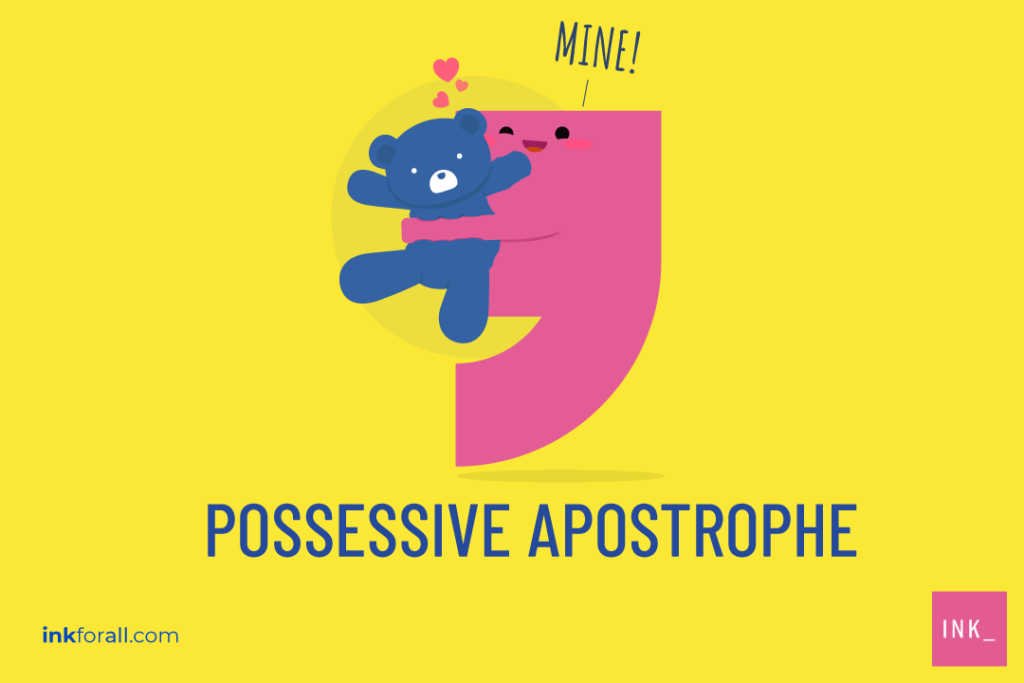Back to: ENGLISH LANGUAGE SS2
Welcome to class!
In today’s class, we will be talking about possessive apostrophe. Enjoy the class!
Possessive Apostrophe

Do you know what possessive apostrophe is or what it does?
When you hear the word, apostrophe, I guess you know that it’s a punctuation mark in the English language. But when you ‘saw possessive apostrophe’ as the focus of this class, what came to your mind? Did you have the right picture?
Let’s confirm if you did.
We use the apostrophe (‘) to achieve the following in sentences:
1. To indicate the genitive of nouns and noun phrases. Does the word ‘genitive’ sound new to you? Whether it does or not, the genitive is also the possessive form of a noun. See examples below:
The girl’s book
The girl’s books
The girls’ books
A child’s toy
The children’s toy
The children’s toys
Dorcas’ money (you pronounce it Dorcas’s money)
St James’ cathedral (you pronounce it James’s cathedral)
The dogs’ trainer
Mr Mathew’s pockets
My brother-in-law’s kids
Vivian and Philip’s hostel (i.e. the hostel they both live in)
Dami’s and Julian’s hostels (i.e. they live in different hostels)
Abbey, Caro and Nnena’s room (a room for all of them)
Queen’s, Timilehin’s and Sodiq’s cars (each of them has their separate cars)
My cousin’s dogs’ food (the food of my cousin’s dogs)
Note that the genitive form of a word is the same as the possessive form of that word. If your name is Joan, the genitive form of Joan is Joan’s, while the genitive form of people is people’s.
2. To indicate the genitive of indefinite pronouns. For examples:
This is someone’s child.
It is nobody’s business.
It is everybody’s affairs.
That is no one’s problem.
3. To mark contractions in words, such as:
can’t (cannot)
won’t (will not)
hasn’t (has not)
wouldn’t (would not)
it’s (it is)
we’d (we would or we had)
they’re (they are)
’20 (2020)
Note that you can only understand what the contraction we’d mean based on the context of the sentence in which it is used. Compare the following statements:
- I’d(I would) have gone if you didn’t call me back.
- If I’d(I had) known, I would’ve returned her money on time.
4. To indicate plurals of numbers, letters, items, figures and cited words or expressions:
Remember to cross your t’s and dot your I’s
The word ‘bee’ has two e’s.
The if’s and the but’s cannot be ignored.
There are two c’s and two m’s in accommodate.
That would cost much less in the 1990s
In our next class, we will be talking about Report Writing and Word Stress. We hope you enjoyed the class.
Should you have any further question, feel free to ask in the comment section below and trust us to respond as soon as possible.
